Hengist And Horsa: Legendary Anglo-Saxon Warrior Brothers And Leaders Of First Settlers In Britain
A. Sutherland - AncientPages.com - According to very ancient poems, Odin's sons, Weldegg, Beldegg, Sigi, Skiold, Sæming, and Yngvi, became kings of Franconia, East Saxony, West Saxony, Sweden, Denmark, and Norway, and from them are descended the Saxons, Hengist and Horsa, and the royal families of the Northern lands.
 Hengist and Horsa arriving in Britain, by Richard Rowlands (1605). Public Domain
Hengist and Horsa arriving in Britain, by Richard Rowlands (1605). Public Domain
But one question is: who were the legendary warrior brothers Hengist and Horsa? Interesting is also whether they existed.
According to Anglo-Saxon tradition, these two heroes, Hengist and Horsa (meaning 'stallion' and 'horse'), were invited to Sub-Roman Britain by the British ruler Vortigern to help him defend against invading Scots and Picts attacking from the North.
After landing at "Wippidsfleet" (Ebbsfleet), Hengist and Horsa successfully drove off the invaders. It is said the two heroes played an essential part in the foundation of the kingdom of Kent.
Immediately after successfully fighting with the enemy, they received a land grant in Kent from Vortigern.
Hengist from John Speed's 1611 "Saxon Heptarchy". Image credit: Professor Liam Thompson - Public Domain
For ages after the arrival of the Saxons under the warlords Hengist and Horsa in 449 AD, the aboriginal inhabitants possessed the whole western coast of Britain. These people were engaged in continuous battles with the invaders.
Archaeological evidence has revealed traces of Germanic settlers in Canterbury in the late 300s; however, the main settlement probably took place in the 450s, under the leadership of the two warlord brothers, Hengest and Horsa.
Some historians have suggested that they are only mythical founding figures, divine twins like Romulus and Remus, rather than real people.
Hengest (also spelled Hengist) and Horsa are said to have been Jutes and sons of Wihtgils, a semi-legendary Jutish chieftain, according to the Anglo-Saxon Chronicle, one of the few literary sources for England's history during the period following the Roman presence and preceding the Norman invasion.
The brothers in Edward Parrott's Pageant of British History (1909). Image credit: Sir Edward Parrott - The Pageant of British History - Public Domain
According to the English historian and theologian Bede, the two brothers were Jutes, generally assumed to have come from Jutland in Denmark.
Hengest and Horsa arrived shortly after 449 with three shiploads of 'Angles or Saxons' at the invitation of Vortigern, king of the Britons (who flourished 425–450). They came to his allies to help him against the Picts, attacking from the North between 446 and 454 AD.
It needs to be specified, however, where, in Britain, this Vortigern had his seat. Was it located in the northwest, closer to the Picts region, or in the south?
The Chronicle also says that Hengest and Horsa fought against Katigern, the second son of Vortigern, near Epiford, and Horsa was killed at Aegelsthrep (possibly Aylesford, Kent) in 455.
The Venerable Bede mentions a monument to him located in east Kent; Horstead, near Aylesford, may be named for him; the Chronicle says that Hengist began to reign in 455 and that he fought against the Britons; it implies that Hengist died in 488.
Updated on Sep 19, 2023
Written by A. Sutherland - AncientPages.com Staff Writer
Copyright © AncientPages.com All rights reserved. This material may not be published, broadcast, rewritten or redistributed in whole or part without the express written permission of AncientPages.com
Expand for referencesReferences:
B. Yorke, Kings and Kingdoms of Early Anglo-Saxon England
More From Ancient Pages
-
 Nicolas Bourbaki: The Greatest Mathematician Who Never Was
Featured Stories | Dec 24, 2019
Nicolas Bourbaki: The Greatest Mathematician Who Never Was
Featured Stories | Dec 24, 2019 -
 On This Day In History: The Battle Of The Nile Concludes In A British Victory – On August 2, 1798
News | Aug 2, 2016
On This Day In History: The Battle Of The Nile Concludes In A British Victory – On August 2, 1798
News | Aug 2, 2016 -
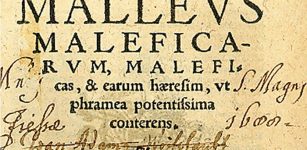 How The Handbook ‘Hammer Of Witches’ And Then-Existing Networks Inspired Europe’s Witch Craze
Social Sciences | Oct 10, 2024
How The Handbook ‘Hammer Of Witches’ And Then-Existing Networks Inspired Europe’s Witch Craze
Social Sciences | Oct 10, 2024 -
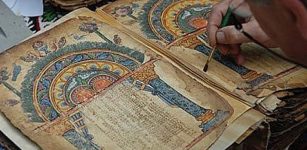 Illuminated Ancient Manuscripts Reflect 1,000 Years Of Human History
Artifacts | Sep 12, 2015
Illuminated Ancient Manuscripts Reflect 1,000 Years Of Human History
Artifacts | Sep 12, 2015 -
 Survivors Of The Latest Ice Age Thrived Near The Sea Of Galilee 23,000 Years Ago
Archaeology | Jan 27, 2022
Survivors Of The Latest Ice Age Thrived Near The Sea Of Galilee 23,000 Years Ago
Archaeology | Jan 27, 2022 -
 Ancient Secrets Of Karelia: Mysterious Vottovaara Mountain Was Sacred To The Sami People
Featured Stories | Apr 5, 2017
Ancient Secrets Of Karelia: Mysterious Vottovaara Mountain Was Sacred To The Sami People
Featured Stories | Apr 5, 2017 -
 Sacred Number One: Very Powerful Symbol Equated With The Mystic Center
Ancient Symbols | Oct 2, 2019
Sacred Number One: Very Powerful Symbol Equated With The Mystic Center
Ancient Symbols | Oct 2, 2019 -
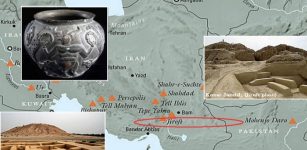 Jiroft’s Konar Sandal – Home To A Huge Ziggurat And Many Ancient Treasures
Featured Stories | Jun 8, 2021
Jiroft’s Konar Sandal – Home To A Huge Ziggurat And Many Ancient Treasures
Featured Stories | Jun 8, 2021 -
 On This Day In History: Battle Of Svolder One Of Greatest Battles of Viking Scandinavia Was Fought – On Sep 9, 1000
News | Sep 9, 2016
On This Day In History: Battle Of Svolder One Of Greatest Battles of Viking Scandinavia Was Fought – On Sep 9, 1000
News | Sep 9, 2016 -
 Jizo – Protector Of Children, Travelers And Women In Japanese Mythology
Featured Stories | Dec 23, 2015
Jizo – Protector Of Children, Travelers And Women In Japanese Mythology
Featured Stories | Dec 23, 2015 -
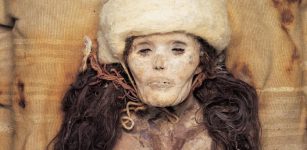 Mystery Of The Tarim Basin Mummies Continues
Archaeology | Oct 27, 2021
Mystery Of The Tarim Basin Mummies Continues
Archaeology | Oct 27, 2021 -
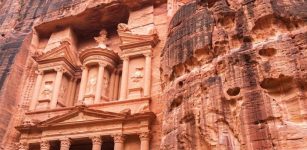 Researchers Sequenced 137 Human Genomes From The Middle East
Archaeology | Aug 6, 2021
Researchers Sequenced 137 Human Genomes From The Middle East
Archaeology | Aug 6, 2021 -
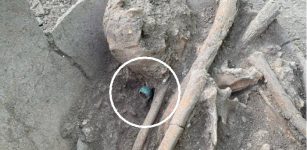 1,200-Year-Old Human Skeleton With A Jade Ring Unearthed In El Tigre Archaeological Zone
Archaeology | Aug 15, 2023
1,200-Year-Old Human Skeleton With A Jade Ring Unearthed In El Tigre Archaeological Zone
Archaeology | Aug 15, 2023 -
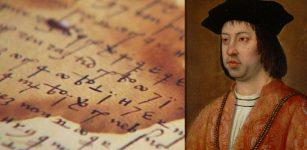 King Ferdinand’s Secret Code Deciphered After 500 Years
Archaeology | Feb 14, 2018
King Ferdinand’s Secret Code Deciphered After 500 Years
Archaeology | Feb 14, 2018 -
 Patara Lighthouse Built By Emperor Nero In 64 AD Will Shine Again
Archaeology | Mar 5, 2020
Patara Lighthouse Built By Emperor Nero In 64 AD Will Shine Again
Archaeology | Mar 5, 2020 -
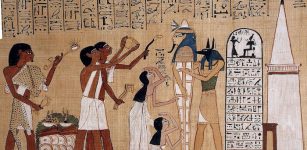 Evidence From Ancient Egypt Shows Smallpox Stretches Back At Least 3,000 Years
Archaeology | Jan 11, 2023
Evidence From Ancient Egypt Shows Smallpox Stretches Back At Least 3,000 Years
Archaeology | Jan 11, 2023 -
 How Did 20th-Century Philosophers Explain Ghosts And Other Spooky Subjects?
Featured Stories | Nov 8, 2024
How Did 20th-Century Philosophers Explain Ghosts And Other Spooky Subjects?
Featured Stories | Nov 8, 2024 -
 Biblical Event Verified By Study Of Earth’s Magnetic Field?
Archaeology | Jan 4, 2024
Biblical Event Verified By Study Of Earth’s Magnetic Field?
Archaeology | Jan 4, 2024 -
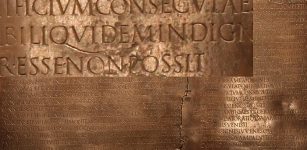 Roman Square Capitals: Prestigious Script That Delighted Human Eye With Its Elegance
Featured Stories | Sep 16, 2019
Roman Square Capitals: Prestigious Script That Delighted Human Eye With Its Elegance
Featured Stories | Sep 16, 2019 -
 Amazing Time Capsule – La Roche-Cotard Cave Sealed For 50,000-Years Offers Evidence Neanderthals Were The World’s First Artists
Archaeology | Nov 22, 2023
Amazing Time Capsule – La Roche-Cotard Cave Sealed For 50,000-Years Offers Evidence Neanderthals Were The World’s First Artists
Archaeology | Nov 22, 2023


